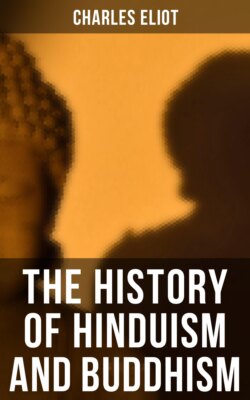Читать книгу The History of Hinduism and Buddhism - Charles Eliot - Страница 49
На сайте Литреса книга снята с продажи.
4
ОглавлениеThe explanation of dreamless sleep as supreme bliss and Yâjñavalkya's statement that the soul after death cannot be said to know or feel, may suggest that union with Brahman is another name for annihilation. But that is not the doctrine of the Upanishads though a European perhaps might say that the consciousness contemplated is so different from ordinary human consciousness that it should not bear the same name. In another passage[191] Yâjñavalkya himself explains "when he does not know, yet he is knowing though he does not know. For knowing is inseparable from the knower, because it cannot perish. But there is no second, nothing else different from him that he could know." A common formula for Brahman in the later philosophy is Saccidânanda, Being, Thought and Joy[192]. This is a just summary of the earlier teaching. We have already seen how the Âtman is recognized as the only Reality. Its intellectual character is equally clearly affirmed. Thus the Bṛihad-Âraṇyaka (III. 7. 23) says: "There is no seer beside him, no hearer beside him, no perceiver beside him, no knower beside him. This is thy Self, the ruler within, the immortal. Everything distinct from him is subject to pain." This idea that pain and fear exist only as far as a man makes a distinction between his own self and the real Self is eloquently developed in the division of the Taittirîya Upanishad called the Chapter of Bliss. "He who knows Brahman" it declares, "which exists, which is conscious, which is without end, as hidden in the depth of the heart, and in farthest space, he enjoys all blessings, in communion with the omniscient Brahman. … He who knows the bliss (ânandam) of that Brahman from which all speech and mind turn away unable to reach it, he never fears[193]."
Bliss is obtainable by union with Brahman, and the road to such union is knowledge of Brahman. That knowledge is often represented as acquired by tapas or asceticism, but this, though repeatedly enjoined as necessary, seems to be regarded (in the nobler expositions at least) as an indispensable schooling rather than as efficacious by its own virtue. Sometimes the topic is treated in an almost Buddhist spirit of reasonableness and depreciation of self-mortification for its own sake. Thus Yâjñavalkya says to Gârgî[194]: "Whoever without knowing the imperishable one offers oblations in this world, sacrifices, and practises asceticism even for a thousand years, his work will perish." And in a remarkable scene described in the Chândogya Upanishad, the three sacred fires decide to instruct a student who is exhausted by austerities, and tell him that Brahman is life, bliss and space[195].
Analogous to the conception of Brahman as bliss, is the description of him as light or "light of lights." A beautiful passage[196] says: "To the wise who perceive him (Brahman) within their own self, belongs eternal peace, not to others. They feel that highest, unspeakable bliss saying, this is that. How then can I understand it? Has it its own light or does it reflect light? No sun shines there, nor moon nor stars, nor these lightnings, much less this fire. When he shines everything shines after him: by his light all the world is lighted."
In most of the texts which we have examined the words Brahman and Âtman are so impersonal that they cannot be replaced by God. In other passages the conception of the deity is more personal. The universe is often said to have been emitted or breathed forth by Brahman. By emphasizing the origin and result of this process separately, we reach the idea of the Maker and Master of the Universe, commonly expressed by the word Îśvara, Lord. But even when using this expression, Hindu thought tends in its subtler moments to regard both the creator and the creature as illusions. In the same sense as the world exists there also exists its creator who is an aspect of Brahman, but the deeper truth is that neither is real: there is but One who neither makes nor is made[197]. In a land of such multiform theology it would be hazardous to say that Monotheism has always arisen out of Pantheism, but in the speculative schools where the Upanishads were composed, this was often its genesis. The older idea is that a subtle essence pervades all nature and the deities who rule nature: this is spiritualized into the doctrine of Brahman attributed to Yâjñavalkya and it is only by a secondary process that this Brahman is personified and sometimes identified with a particular god such as Siva. The doctrine of the personal Îśvara is elaborated in the Śvetâśvatara Upanishad of uncertain date[198]. It celebrates him in hymns of almost Mohammedan monotheism. "Let us know that great Lord of Lords, the highest God of Gods, the Master of Masters, the highest above, as God, as Lord of the world, who is to be glorified[199]." But this monotheistic fervour does not last long without relapsing into the familiar pantheistic strain. "Thou art woman," says the same Upanishad[200], "and Thou art man: Thou art youth and maiden: Thou as an old man totterest along on thy staff: Thou art born with thy face turned everywhere. Thou art the dark-blue bee: Thou the green parrot with the red eyes. Thou art the thunder cloud, the seasons and the seas. Thou art without beginning because Thou art infinite, Thou, from whom all worlds are born."
